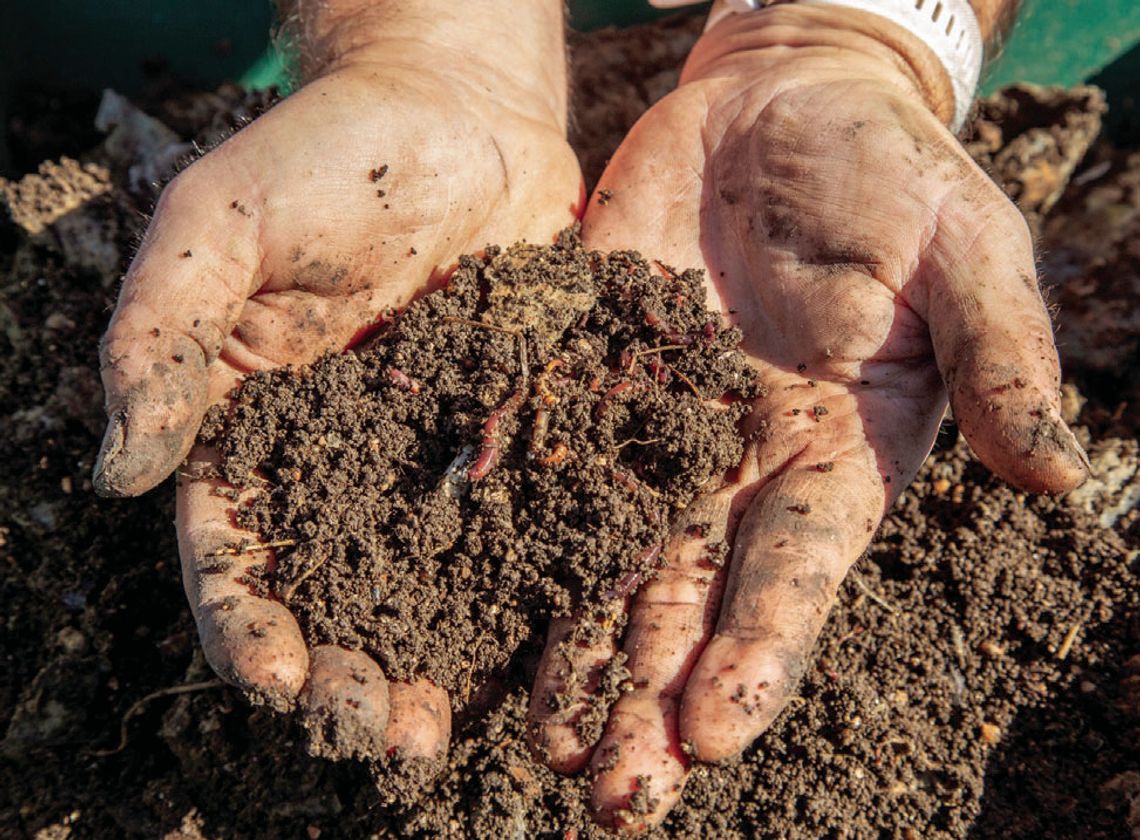THE CIBOLO CENTER FOR CONSERVATION
DAVID TOUCHON
CCC LAND MANAGER
“Closing the loop” is a core principle within any conservation related topic. When working upon the land there is always a degree of “taking” from the land, but when do you reach the tipping point of taking too much?
The world of decomposition is wide and diverse depending on what you are looking to do. Naturally, anything that falls on the earth will return to the earth with a little help from FBI — fungus, bacteria and insects.
The major factors within the world of decomposition/ return are local climate, temperature and moisture. It is easy to use extreme examples of certain locations, but since the Texas Hill Country is nestled at 29 degrees north latitude, we are good to go.
We have all seen the once robust majestic brush pile, brush fence or brush enclosure in all its glory slowly deflate to nearly ground level. It is not due to neglect but rather time, loss of moisture, FBI interaction and gravity. An organized unintentional form of composting on the land management side of the equation.
The Texas Hill Country offers a wonderful climate to exercise or practice controlled decomposition in the form of composting. Composting focuses on the “reusage/return” of organic matter, grown upon the land or purchased at the grocery store, to enhance and amend floral growth; hence, “closing the loop.”
There is no standard look to any composting operation. Composting takes many forms, from large scale farmland “manure / hay heaps” to well organized urban compost bins. The content of most composting efforts revolves around household organic materials like vegetables, coffee grains, grass clippings, bark, horse manure, pine shavings, small twigs, hay, straw, garden clippings and eggshells.
As you build your “heap” or pile, it is critically important to maintain a balance of “brown” and “green” materials. Brown materials are just that; brown, no water content. Like a fall leaf.
Green materials may include fresh grass clippings, garden pruning and vegetable cuttings from your kitchen.
My backyard compost operation leans towards the green side, so I must bring in some brown materials to balance it out. Once the brown and green ratios are roughly equal, you can blend them into homogeneity; you have now reached the monitoring phase.
Now that you are monitoring, a soil thermometer comes in very handy to see what kind of action you are getting. The temperature “sweet spot” we are shooting for is between 130-140 degrees, which means we have an “active pile” and decomposition occurring (FBI).
The presence of steam and warmth to touch is a good indicator of digestion. A correctly functioning compost pile/heap will generate enough heat to render any seeds or pathogens within the pile inert and safe for usage within a couple of days.
When your compost goes “cold,” add green materials and turn. If your pile goes “hot,” add brown materials and turn.
Turning is everything. It is not uncommon for a pile to reach 200 degrees, which should be watched carefully. Over time you will notice that the original ingredients will start to “blend.” Is it perfect? No. I have plenty of volunteer cherry tomatoes, cantaloupe, watermelon, beans, onions, squash, sunflowers and avocado trees throughout the backyard, and I will gladly accept them all.
And then there's the varmints. You will aways have occasional visitors to your compost operation due to the nature of composting and the associated microfauna.
Through intentional turning and proper ratios, you will soon produce high powered compost humus for your land, hence “Closing the Loop.”
“Begin with the end in mind” -- Steven Covey. The summer greens lead to fall browns which produce finished products for March garden beds. Phone a friend if you need help and perfect your turn.
David Touchon is Land Manager for the Cibolo Center for Conservation Land.









Comment
Comments